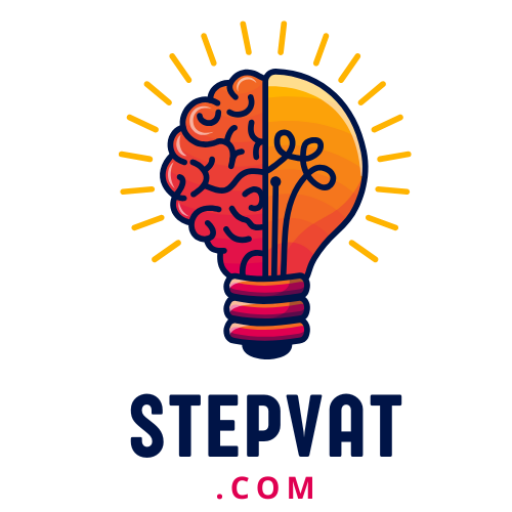Anuncios
¿Quieres saber por qué las ofertas de empleo están cambiando en 2025? Verás ciclos de networking más rápidos y foros más inteligentes que revelan perfiles específicos. Combina networking específico, aplicaciones optimizadas y un seguimiento constante en lugar de depender únicamente de las publicaciones.
Debe esperar que muchos puestos de calidad se gestionen a través de recomendaciones, círculos de exalumnos y asociaciones. Consulte Indeed, Monster, Google for Jobs y CareerBuilder para obtener listados amplios. Utilice Dice, ArtsThread, Upwork, PeoplePerHour y SimplyHired para trabajos especializados o freelance.
Planifique una cadencia semanal Para difusión, solicitudes, actualización de habilidades y seguimiento. Visite las páginas de empleo de las empresas, pruebe la difusión en frío inteligente y prepárese para entrevistas en persona en ferias específicas. Para obtener apoyo gubernamental, comuníquese con CareerOneStop al 1-877-872-5627 (TTY 1-877-889-5627) o a [email protected].
Adapte estos consejos a su situación y consulte a un asesor profesional o legal calificado para obtener orientación personalizada a medida que realiza la transición con respeto y planificación.
Introducción: Cómo buscar empleo en un mercado laboral cambiante en 2025
Cómo las ofertas de empleo de 2025 muestran una contratación que prioriza habilidades especializadas y decisiones rápidas y basadas en redes. El mercado cambió porque las empresas necesitan experiencia específica y, a menudo, contratan a través de referencias y grupos de talento limitados.
El networking, tanto en línea como en persona, descubre puestos no anunciados en el mercado laboral oculto. Portales de empleo como Indeed, Monster, Google for Jobs y CareerBuilder siguen siendo fundamentales. Los sitios web especializados y las plataformas para freelancers amplían tus opciones.
La adaptación requiere un plan simple. Un contacto específico, una narrativa concisa y una rutina semanal de solicitudes y actualización de habilidades mantienen tu búsqueda estable. Utiliza las páginas de la empresa, los correos electrónicos no solicitados, los reclutadores, los servicios del campus, el trabajo temporal, las prácticas y el voluntariado selectivo cuando se ajusten a tus objetivos.
Esta guía tiene carácter educativo y general. Personalice estos pasos según su situación y consulte con un asesor profesional o legal calificado para obtener apoyo personalizado.
- Combine referencias con búsquedas en el tablero para lograr alcance y velocidad.
- Prepara historias concisas para ferias y proyecciones virtuales.
- Realice un seguimiento del alcance, las aplicaciones y los objetivos de habilidades cada semana.
Las redes y las referencias avanzan más rápido que las publicaciones
Las redes y las referencias personales ahora revelan muchos puestos antes de que lleguen a las bolsas de trabajo. Aprovecha las redes de antiguos alumnos, las asociaciones profesionales y a tus compañeros de trabajo actuales para aprovechar ese flujo oculto.
Antiguos alumnos y asociaciones del grifo
Únase a capítulos activosAsiste a eventos locales y publica actualizaciones breves sobre el puesto que buscas y las habilidades que aportas. Mantén las publicaciones concretas: una frase sobre tu fortaleza y un resultado reciente.
Haz que LinkedIn funcione
Solicita una presentación cordial a un contacto en común. El mensaje no debe exceder las tres líneas e incluye un resultado medible que demuestre tu valor. Usa la búsqueda de exalumnos y los filtros de equipo para encontrar a las personas adecuadas, no solo a los reclutadores.
Convierta a sus compañeros de trabajo en defensores
Antes de solicitar una recomendación, confirme que se sientan cómodos. Ofrézcales una breve reseña y un currículum actualizado para que puedan compartirlo rápidamente. Respete las negativas y envíeles una nota de agradecimiento.
- Cadencia semanal: cinco mensajes dirigidos, dos charlas de café y un seguimiento.
- Realice un seguimiento del alcance en una hoja sencilla: fecha, persona, empresa, estado, siguiente paso.
- Dar primero: felicitar los triunfos y compartir enlaces útiles para generar buena voluntad.
Ningún método garantiza resultados. Sea constante, educado y paciente; las relaciones a menudo mejoran con el tiempo.
Las bolsas de trabajo maduraron: poder general, especializado y agregador
Los agregadores y sitios especializados ayudan a limitar el ruido y a mostrar listados más adecuados rápidamente.
Plataformas generales Como Indeed, CareerBuilder, Google for Jobs y Monster, captan el mayor volumen. Configura alertas con los nombres de los puestos y las habilidades clave (por ejemplo: "gerente de producto + SQL"). Consulta estos foros a diario y postúlate en un plazo de 24 a 48 horas para una mejor visibilidad.
Búsquedas especializadas
Para puestos técnicos, filtra Dice por stack y antigüedad (por ejemplo: Python + AWS, antigüedad). Para trabajos creativos, usa los portafolios de ArtsThread y vincula las piezas en tu solicitud.
Centros de trabajo freelance y por contrato
En Upwork y PeoplePerHour, crea un perfil de nicho preciso con evidencia de resultados y 2 o 3 casos prácticos breves. SimplyHired y Crowded agrupan contratos: configura alertas para la fase de contratación si esa ruta es relevante.
- Currículums a medida con palabras clave que reflejan los elementos imprescindibles de cada publicación.
- Realice un seguimiento de qué juntas envían entrevistas y duplique la apuesta en las dos primeras.
- Verifique los listados en las páginas de empleadores y evite compartir datos confidenciales.
Consejo: Combine la actividad de la junta con la divulgación. Una nota rápida a un contacto de exalumnos suele aumentar las probabilidades de respuesta en anuncios competitivos.
Sitios web de empresas y difusión en frío inteligente
Comience por hacer una lista de los empleadores con los que realmente desea trabajar y luego observe sus páginas de carreras como si fueran un radar.
Cree una lista de empleadores objetivo y enfocada. Busca entre 25 y 40 empresas que se ajusten a tus habilidades y valores. Incluye enlaces directos a páginas de empleo y portales de solicitud de empleo.
Cree una lista de empleadores objetivo y monitoree las páginas de carreras
Configura recordatorios semanales en tu calendario y suscríbete a las alertas de puestos disponibles. Consulta cada página de empleo y usa el lenguaje del puesto en tus materiales al postularte.
Correo electrónico frío con contexto: breve, específico y orientado a las habilidades
Identifica a posibles responsables de contratación a través de las páginas de tu equipo o LinkedIn. Envía un breve correo electrónico en frío: quién eres, un resultado medible, el equipo o área del puesto y una solicitud cortés para una charla rápida.
“Una nota concisa que demuestre que se ajusta al puesto a menudo abre puertas para puestos no publicados”.
- Adjunte o vincule un currículum personalizado y un portfolio o GitHub cuando sea relevante.
- Realice un seguimiento después de 7 a 10 días con una nueva muestra; luego déjela reposar.
- Seguimiento del alcance: fecha, contacto, ángulo del mensaje, respuesta, próxima acción.
Sea realista: El contacto en frío puede ser un éxito o un fracaso, pero una nota en el momento oportuno puede dar lugar a una entrevista para un puesto que no figura públicamente.
Las ferias de empleo son más específicas y ofrecen entrevistas en el momento
Actualmente, muchas ferias específicas de la industria conectan talentos con reclutadores listos para entrevistarlos en el momento.

Prepárate como si fuera una mini entrevista. Revisa el folleto del evento y ubica en un mapa a los empleadores. Selecciona de 5 a 8 organizaciones destacadas y descubre un desafío actual que enfrentan.
Preparación: currículum, presentación y seguimiento
Traiga varios currículums personalizados y un resumen de proyecto de una página cuando sea relevante. Lleve tarjetas de presentación y un portafolio conciso si su campo valora las muestras.
- Practica un discurso de 20 a 30 segundos que vincule tus habilidades con una necesidad del empleador.
- Vístase para una entrevista, llegue temprano y tenga preparadas respuestas breves para las indicaciones más comunes.
- Considere cada conversación en el stand como una evaluación: haga una pregunta específica para su puesto e indique una forma en la que puede ayudar.
Prepárese para entrevistas el mismo día; mantenga su calendario flexible y tenga referencias a mano.
Después del hecho, Recopila contactos, envía correos electrónicos de agradecimiento el mismo día con referencias a los detalles que discutiste y haz seguimiento de los resultados. Esta práctica revela qué ferias generan entrevistas reales y cuáles debes evitar la próxima vez.
Reclutadores, cazatalentos y colocación en campus
Los reclutadores y los servicios del campus pueden acelerar la búsqueda de candidatos cuando se presentan resultados claros y objetivos de roles realistas.
Cuándo contratar una agencia: Trabaja con un reclutador si encajas en un nicho definido, deseas acceder a puestos confidenciales o necesitas ayuda para posicionarte para vacantes con alta demanda. Las agencias suelen actuar con mayor rapidez en búsquedas especializadas.
Cuándo cobran las agencias y qué confirmar
La mayoría de las empresas reciben un pago a través del empleador a base de comisión cuando se realiza una contratación. Verifique siempre quién paga y cualquier término de colocación antes de compartir materiales detallados.
Uso de los servicios profesionales del campus y las redes de exalumnos
Si eres estudiante o exalumno, utiliza los centros de orientación profesional para revisar tu currículum, simular entrevistas y participar en paneles de empleadores. Las presentaciones de exalumnos suelen abrirte puertas que las publicaciones públicas pasan por alto.
- Pregunte a los reclutadores sobre colocaciones recientes en su puesto y los contactos de sus gerentes de contratación.
- Prepare materiales listos para el reclutador: un currículum limpio, resultados cuantificados y un resumen de un párrafo sobre las industrias y ubicaciones deseadas.
- Sea receptivo y transparente respecto de otros procesos para que los reclutadores puedan priorizar las presentaciones oportunas.
“Los reclutadores y los equipos del campus amplían el alcance, pero no garantizan ofertas; úselos junto con su búsqueda directa”.
Trabajo temporal, prácticas y voluntariado como trampolines
Los contratos temporales pueden ser una vía rápida si demuestras rápidamente tu valor. Considera las tareas cortas como minientrevistas: entrega trabajo medible, anota los resultados y expresa tu disposición a cambiar de trabajo.
Contratos de corto plazo que se convierten en puestos de tiempo completo
Genere impacto desde el principio: Establezca objetivos claros en la primera semana y envíe actualizaciones de estado concisas. Documente los logros para demostrar su impacto en las conversaciones de conversión.
Trayectorias profesionales tempranas: prácticas y voluntariado estratégico
Solicita con anticipación tus prácticas y adapta los materiales a los proyectos publicados. Utiliza los servicios de colocación en el campus y las recomendaciones de exalumnos cuando estén disponibles.
- Encuentre trabajo temporal a través de agencias de contratación, portales de personal y filtros de contrato de SimplyHired.
- Ofrécete como voluntario en un lugar donde tus habilidades resuelvan problemas reales (limpieza de datos, comunicaciones u operaciones) para obtener referencias.
- Lleva un registro de resultados de cada puesto y actualiza tu currículum y LinkedIn con logros concretos.
Ningún puesto a corto plazo garantiza una contratación permanente. Pero cada uno construye su red, credibilidad y resultados demostrables que los empleadores valoran.
Recursos gubernamentales y comunitarios que realmente puedes usar
Los recursos públicos brindan vías estables y de bajo costo para capacitación, listados y ayuda profesional.
CareerOneStop Funciona como un centro de herramientas de búsqueda, opciones de capacitación local y soporte. Para obtener información sobre empleos, capacitación, recursos profesionales o prestaciones por desempleo, llame al 1-877-US2-JOBS (1-877-872-5627) o al TTY 1-877-889-5627. Para obtener ayuda con el sitio web de CareerOneStop: [email protected].
Bolsas de trabajo públicas y servicios locales
Consulta las bolsas de trabajo federales y estatales para encontrar ofertas estables en diversos campos. Filtra por ocupación, ubicación y proceso de contratación para encontrar puestos que se ajusten a tu perfil.
Explorar enlaces de capacitación y certificación En esos sitios, para cubrir la falta de habilidades, los empleadores las incluyen como requisitos. Contacte con los Centros de Empleo Estadounidenses locales para obtener talleres sobre currículum vítae, preparación para entrevistas y recomendaciones de programas comunitarios.
“Estos recursos son gratuitos y pueden ampliar tu alcance al combinarlos con redes y foros privados”.
- Empieza temprano: Los plazos de los roles públicos pueden ser más largos; siga cada paso cuidadosamente.
- Utilice filtros: La ocupación, la ubicación y la ruta de contratación se enfocan en resultados más rápidos.
- Combinar fuentes: Las herramientas públicas complementan los tableros, las referencias y el alcance directo.
Cómo buscar ofertas de empleo: un plan semanal práctico y repetible
Un plan semanal repetible convierte las búsquedas aleatorias en progreso medible. Use una cadencia clara que equilibre las solicitudes, la divulgación y la práctica de habilidades.
Cadencia diaria: aplicaciones, puntos de contacto de redes, actualización de habilidades
Mañana: Escanee alertas y nuevos listados, marque roles que se ajusten mejor y configure temporizadores de solicitud rápida.
Mediodía: Envíe mensajes específicos, haga seguimiento de notas anteriores y programe dos conversaciones informativas cada semana.
Tarde: Envíe de 1 a 3 solicitudes personalizadas y registre las actualizaciones. Termine el día con una revisión de seguimiento de 5 minutos.
Seguimiento de oportunidades: objetivos, métricas y seguimiento
- Objetivos semanales: 8 a 12 aplicaciones personalizadas, 10 a 15 contactos en red específicos, 2 a 3 bloques de habilidades.
- Realice un seguimiento de la tasa de respuesta, las entrevistas por semana y las ofertas por mes para ver qué funciona.
- Priorice los roles que coincidan estrechamente y postúlese dentro de las 24 a 48 horas posteriores a la publicación.
Manténgase profesional: transiciones, avisos y preparación para la incorporación
Al aceptar una oferta, avise con dos semanas de anticipación y presente una breve renuncia por escrito. Mantenga un tono cortés y finalice con convicción.
“Una salida limpia preserva la reputación y las redes que pueden ayudar más adelante”.
Antes de su primer día, revise el manual del empleado, configure las herramientas necesarias e investigue a sus compañeros de equipo en LinkedIn para facilitar la incorporación.
Conclusión
Las búsquedas de empleo en 2025 recompensarán una combinación constante de networking, postulaciones específicas y seguimiento oportuno. Utilice métricas cada semana para ver qué canales generan entrevistas y concentre su atención en los mejores para su perfil.
Deje sus puestos actuales respetuosamente, con el debido aviso, y manténgalos breves y profesionales. Antes de asumir un nuevo puesto, revise las herramientas, las políticas y los pasos de incorporación para poder contribuir desde el principio.
Los plazos varían Y ningún camino garantiza una oferta única. Mantén la paciencia, perfecciona tus materiales y cultiva las relaciones durante meses en lugar de días.
Si necesita orientación personalizada, consulte con profesionales calificados (consejeros profesionales, asesores financieros o abogados) que puedan asesorarlo sobre elecciones y transiciones complejas.



